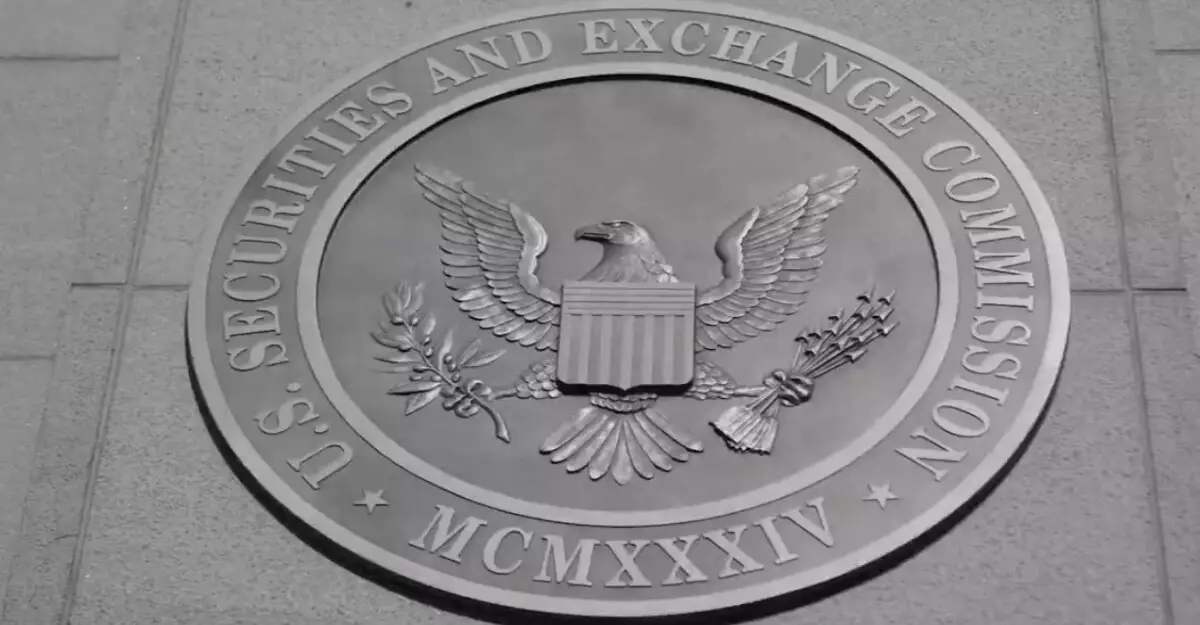As the U.S. Securities and Exchange Commission (SEC) gears up to regulate the burgeoning cryptocurrency landscape, one must ask: Can any regulation truly keep pace with the rapid evolution of the digital financial ecosystem? The SEC’s Crypto Task Force, backed by President Trump’s directives, is scheduled for another roundtable meeting on April 11, aiming to construct a safer regulatory environment for crypto trading. While this appears to be a decisive move toward clarity, the fundamentals of such regulations remain deeply troubling. The reality is that as we aspire for a regulated crypto market, we might inadvertently solidify a framework that stifles innovation rather than promotes it.
The Roundtable: A Circus of Perspectives
The upcoming roundtable, titled “Between a Block and a Hard Place: Tailoring Regulation for Crypto Trading,” is set to include notable figures like Gregory Tusar of Coinbase and Katherine Minarik from Uniswap Labs. With nine panelists from various sectors—including top executives from the likes of the New York Stock Exchange and academic institutions—one might assume a wide array of insights will guide these discussions. Yet, consider this: will the concerns of regular cryptocurrency users translate effectively through the lens of institutional leaders? The event is public and presents a grand opportunity for engagement, but it begs the question of whether the SEC’s approach genuinely embraces the voices of the everyday individual, rather than simply catering to established financial powerhouses.
The Clock is Ticking: Pressure Builds for Quick Action
As President Trump has ordered the task force to finalize crypto regulations by August, an air of urgency permeates the ongoing dialogues. The SEC is under pressure to distill a convoluted, multifaceted crypto landscape into a clear set of guidelines within an exceedingly tight timeframe. This urgency moots meaningful reflection on the nuances that underpin the crypto ecosystem. Speed-focused rule-making is a perilous endeavor that may overlook critical aspects related to consumer protection, innovation, and emerging technologies. In different scenarios, hasty regulations have led to missteps that suffocate nascent industries before they even gain traction.
A Journey Towards Clarity or a Step into Obscurity?
Commissioner Hester M. Peirce has championed the roundtable as an opportunity to garner public concerns and suggestions. But genuine engagement with the crypto community—those who live and breathe this technology—can’t be achieved through a mere public commentary period. The idea that a couple of hours of discussion can encompass the complex feelings, intentions, and desires of millions of cryptocurrency enthusiasts and participants across the country seems overly simplistic. Cryptocurrencies thrive on decentralization, and imposing centralized regulations can radically reshape their essence.
This conversation encapsulates a broader irony: regulation is necessary to establish safety but can also lead to stifling the very dynamism that can benefit the whole economy. The SEC might be fostering an environment that increasingly mirrors traditional finance—an industry plagued by rigidity and bureaucracy—to the detriment of innovation in the crypto realm.
Stablecoins: A Fragile Consensus
Reflecting on the SEC’s earlier determinations during its inaugural roundtable, asserting that stablecoins do not classify as securities showcases a significant, albeit contentious stance. This categorization signals a misunderstanding of the fundamental attributes and functionalities within the cryptocurrency spectrum. To compound the issue, it trivializes the potential of robust regulatory measures that could enhance the stability and security of these financial instruments. Navigating this terrain requires more than soundbites—it necessitates a sincere grapple with the transformative potential that crypto can offer market participants and society at large.
Trump’s Pro-Crypto Stance: A Double-Edged Sword?
Under Trump’s administration, we observe an apparent enthusiasm for a “pro-crypto roadmap,” with executive orders and meetings aimed at nurturing the dialogue. However, one must remain vigilant in parsing whether this agenda genuinely champions broader access and innovation, or simply serves to bolster the existing financial elite. The notion of a “strategic reserve of cryptocurrencies” might sound appealing, but one must ponder at what cost such measures might come. The fusion of political will and regulatory action heralds a future filled with promise, but it equally presents the risk of entrenching power dynamics that could render the crypto space inaccessible to those who stand to gain from it the most.
The quest for clarity in cryptocurrency regulation is admirable, but it dances precariously on the edge of innovation versus control. The question remains: will these regulations propel a new era of financial inclusion, or will they further entrench the status quo?


Leave a Reply